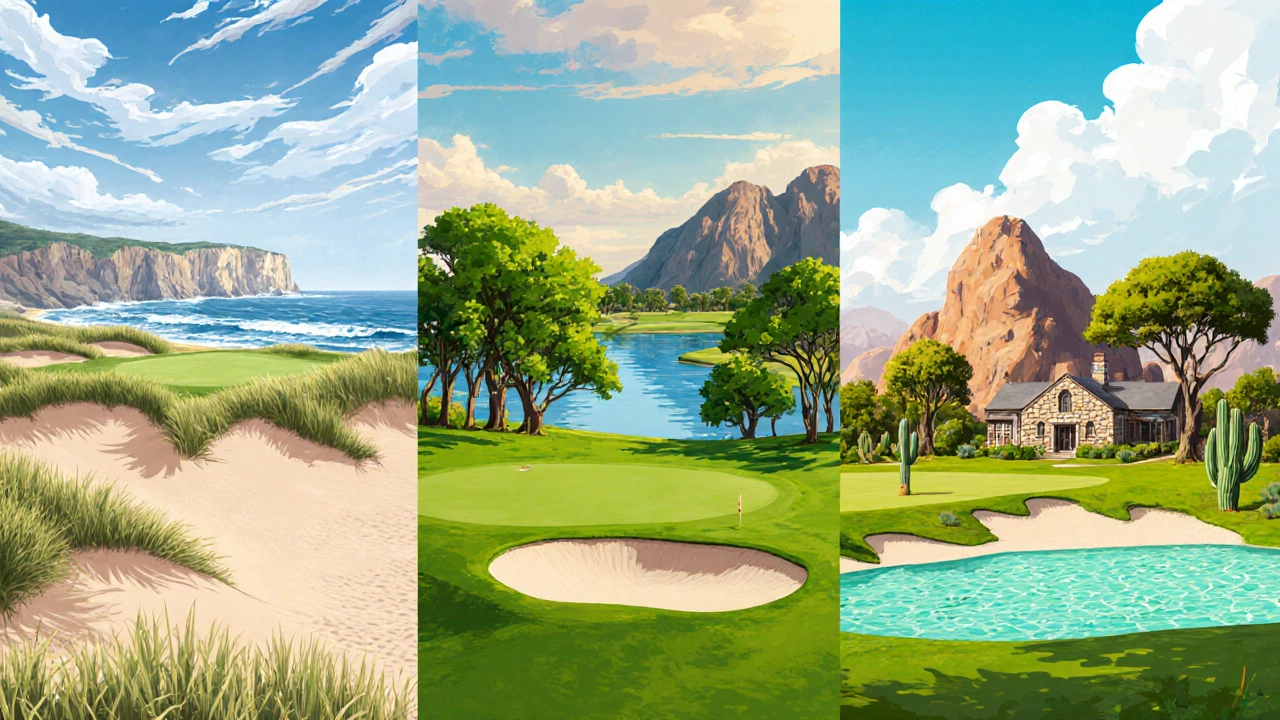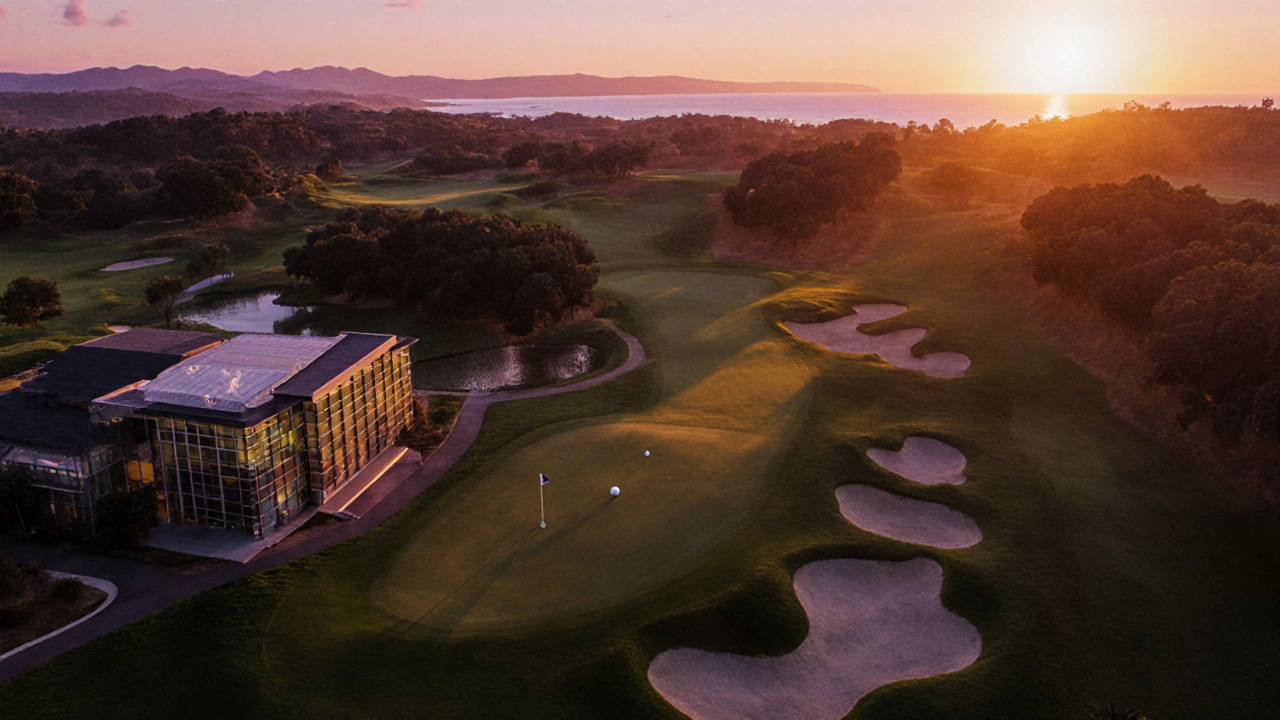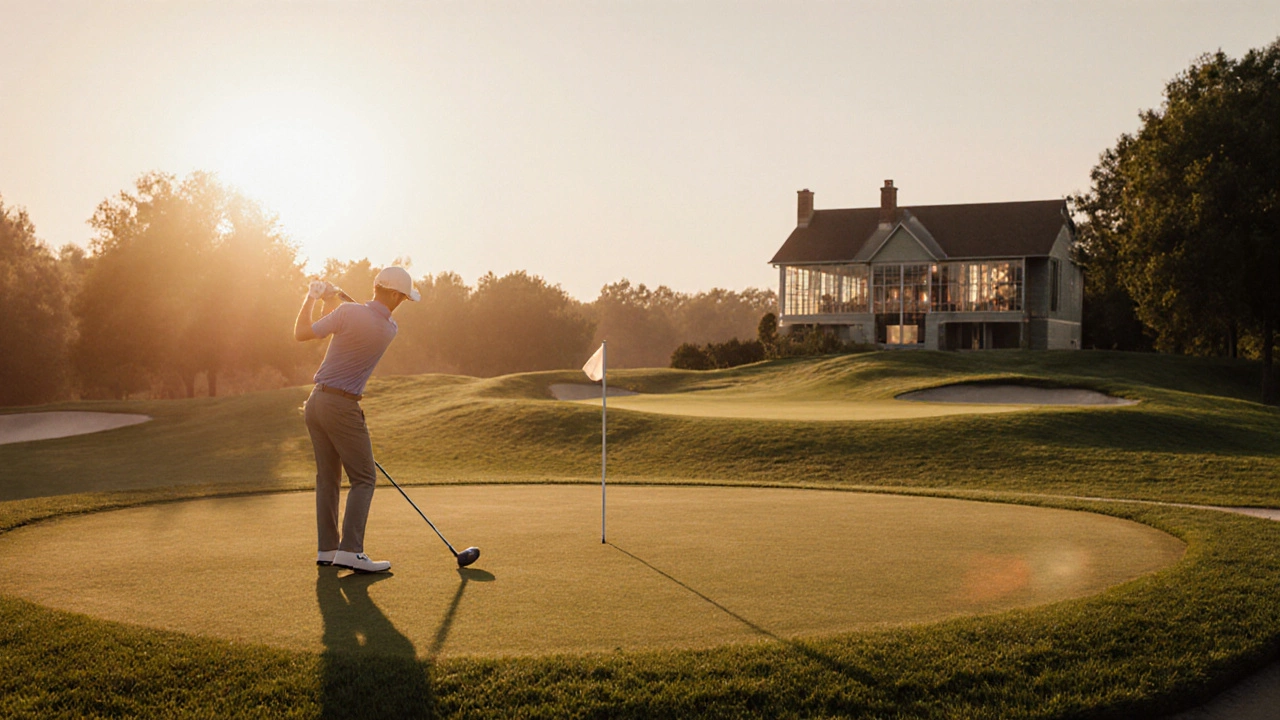Golf Course Type Identifier
Different golf courses are designed with varying terrains and features. Identify which type of golf course you're dealing with by selecting the characteristics below.
Ever heard someone talk about the "golf field" and wondered what they really mean? In everyday speech that phrase just points to a golf course - the place where you tee off, chase a little white ball, and try to finish each hole in as few strokes as possible. Let’s clear up the terminology, walk through the parts that make up a course, compare the main styles you’ll see around the world, and answer the questions that usually pop up.
What Exactly Is a Golf Course?
A golf course - a large, landscaped area divided into a series of holes, each with a starting point (tee), a fairway, and a target area (green) that players aim to reach using clubs is more than just a field of grass. It’s a carefully designed landscape that balances challenge, strategy, and scenery. Modern courses range from compact 9‑hole layouts that fit into a city park to sprawling championship venues that cover over 150 acres.
The Building Blocks of Any Golf Course
Every round follows the same basic sequence, and each segment has a name and purpose. Below is a quick tour of the most common elements - each introduced with a short definition.
- Hole - the complete playing unit, typically numbered 1 through 18, that starts at a tee box and ends at a green
- Tee box - a small, level area where the first stroke of each hole is taken; often marked with colored markers indicating difficulty
- Fairway - the well‑mowed strip of grass that connects the tee box to the green, offering the best chance for an accurate shot
- Rough - longer, thicker grass that borders the fairway; hitting into it usually makes the next shot tougher
- Green - the closely mowed area surrounding the hole’s cup, where players putt to finish the hole
- Bunker - a sand‑filled hazard, typically placed near the green or along the fairway, that forces a different type of shot
- Hazard - any natural or artificial obstacle (water, trees, bunkers) that designers use to increase difficulty
- Flagstick - the pole with a flag that marks the exact location of the hole on the green
- Clubhouse - the main building where players check in, store gear, grab a drink, and sometimes stay overnight

Types of Golf Courses You’ll Encounter
Not all courses look the same. Designers group them into a few broad categories based on terrain, vegetation, and design philosophy. Below is a quick side‑by‑side comparison to help you spot the differences the next time you book a tee time.
| Type | Typical Terrain | Key Features | Best For |
|---|---|---|---|
| Links | Coastal dunes, sandy soil | Low‑lying grass, deep bunkers, windy conditions | Players who enjoy strategic, ground‑game play |
| Parkland | Inland, tree‑lined fairways | Lush fairways, water hazards, mature trees | Those who prefer a visually rich, shot‑shaping experience |
| Desert | Arid, rocky, sparse vegetation | Wide open spaces, artificial turf on greens, cactus or rock hazards | Players looking for a unique, low‑maintenance setting |
How a Round Typically Unfolds
- Check in at the clubhouse and pick up a scorecard.
- Head to the tee box for the first hole. Choose a tee marker that matches your skill level.
- Drive the ball down the fairway. If you miss, you’ll likely land in the rough or a bunker.
- Approach the green using a mid‑iron or wedge, trying to stay clear of any surrounding hazard.
- Read the slope, line up the flagstick, and putt. One or two strokes here finish the hole.
- Move to the next numbered tee and repeat until you’ve played all 18 holes (or 9, if it’s a shorter layout).

Fun Facts and Numbers That Put Golf in Perspective
- There are more than 34,000 golf courses worldwide, with the United States alone housing roughly 15,000 of them.
- The longest officially recorded hole is the 105‑yard par‑5 at the Satsuki Golf Club in Japan, measuring 1,111 yards.
- Most championship courses are designed to a standard length of 6,500‑7,200 yards for men and 5,800‑6,200 yards for women.
- The term "golf" itself likely comes from the Dutch word "kolf," meaning club.
- According to a 2023 survey by the World Golf Federation, over 2.5billion people have tried golf at least once.
Frequently Asked Questions
Is "golf field" the same as "golf course"?
Yes. In casual conversation people sometimes say "golf field," but the official term is "golf course." Both refer to the full layout of holes, tee boxes, fairways, and greens.
How many holes does a standard golf course have?
Most full‑size courses have 18 holes. Smaller courses, especially those in urban areas, often offer a 9‑hole layout that can be played twice for a full round.
What’s the difference between a "par 3" and a "par 5"?
Par indicates the number of strokes an expert golfer is expected to need. Par‑3 holes are short (usually under 200 yards) and can be reached with one strong tee shot. Par‑5 holes are much longer (500‑600 yards) and typically require three or more strokes to reach the green.
Do all golf courses have sand bunkers?
Almost every modern course includes at least a few bunkers, especially near the greens and along the fairways, because they add strategic challenge. However, some very old or minimalist courses may have very few or none.
Can I play golf without a membership?
Absolutely. Many public courses charge a daily green‑fee, and a growing number of private clubs offer "pay‑as‑you‑play" options for guests.
